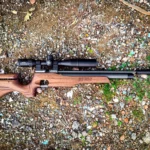The U.S. Army is on the verge of updating its howitzer fleet to double the shooting range. The M109A7 Paladin and M777 howitzers are likely to see a serious increase in the distance at which they can support friendly forces while staying out of the range fans of Russian and Chinese-made artillery.
One part of this upgrade: a gun barrel nearly as long as a telephone pole.
A Work of Art(illery)
Field artillery is back in vogue. The U.S, has spent the past two decade in infantry-intensive wars in places like Iraq and Afghanistan, but the shift back to big-power potential warfare against enemies like Russia and China has turned attention back to the artillery branch. Howitzers and rocket launchers are the primary means of fire support for ground forces in conventional battle and can strike targets miles behind enemy lines.
The U.S. Army has some very good artillery weapons, including the M109A7 Paladin self-propelled howitzer (above) and the M777 towed howitzer. Long-distance shooting really isn’t their strong suit, though. Both guns can fire to a range of 14 miles with conventional shells and 18.6 miles with rocket-assisted shells, or RAPs, which give each shell some extra oomph but at a cost of less explosive filler and slightly less accuracy.
The problem is that Russian guns can shoot even farther. Russia’s older self-propelled howitzer, the Msta, can shoot to ranges of 24 miles while the new Koalitsiya howitzer has a range of 43 miles. That means that U.S. howitzers must operate within range of Russian guns, and the Koalitsiya could bombard U.S. artillery forces at maximum range without U.S. guns being able to shoot back.
Winning the Range Game
The Extended Range Cannon Artillery program is an attempt to buy more distance versus Russian artillery by improving existing American guns. In the short term, as Breaking Defense points out, that includes a new RAP round, the XM113, which will push existing guns to 24 miles. The XM113 will start hitting the field in 2 to 3 years. A combination of RAP shell, new propellants and a new, super-long howitzer barrel should push Army howitzers to 43 miles.
The new howitzer barrel, recently tested at Yuma Proving Ground and shown above, is 58 calibers long. In cannon and howitzer terminology, the caliber of the barrel is not the barrel diameter, but the length. In this case, the gun is 58 times the diameter of the barrel. To determine the length of a 155mm/58 caliber howitzer, multiply 155 by 58. That’s 8,990 millimeters long, or 29.49 feet. That’s six feet longer than the existing gun on the M109 howitzer.
Longer barrels allow the explosive gasses produced by burning propellant to act longer on the shell, so it gives the barrel at greater velocities. Greater velocity equals greater range. A short-barreled rifle, for example, will have a slower muzzle velocity and shorter range than a rifle with a longer barrel.
In addition to the ERCA upgrades, the Army could end up fielding the new Nammo ramjet artillery shell. Nammo, a Norwegian company and contractor in the XM113 program, claims its ramjet shell can reach ranges of 60 miles or more. Powered by a ramjet, the round uses the surrounding air as fuel, reducing the need for fuel on board the shell itself.
The Army’s new cannon tech should keep U.S. artillery competitive with Russian artillery, at least while the Army is busy buying a replacement for the M2 Bradley infantry fighting vehicle and M1 Abrams main battle tank. The long barrels make travel a bit awkward, especially through forests and urban areas, but the benefit to Army artillery will be significant and at minimal cost.











































